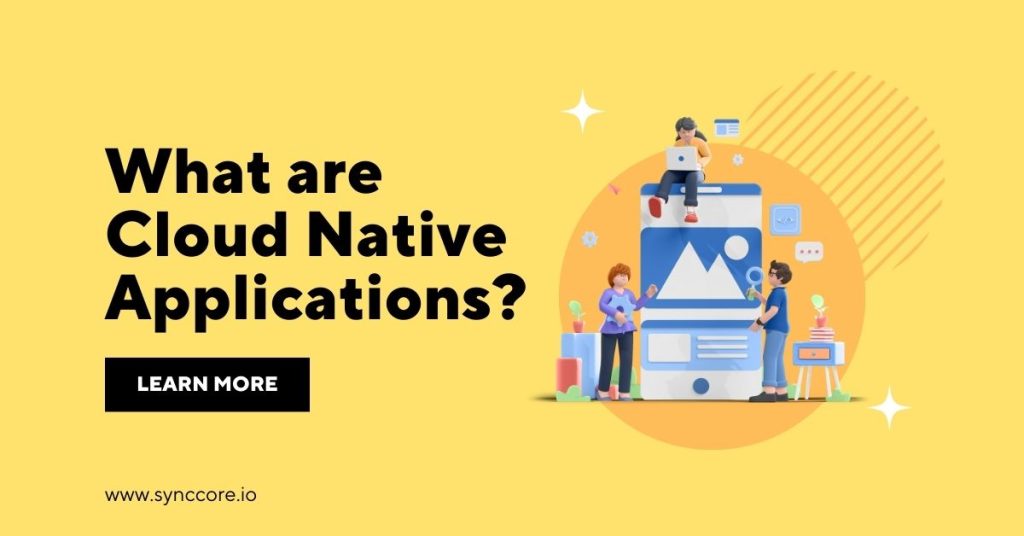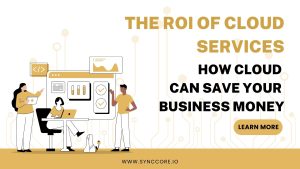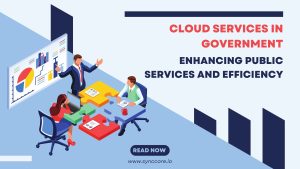While there isn’t a universal definition for cloud-native applications, some common principles characterize them. Cloud technologies are used to create applications that are easier to manage and scale. The cloud is about giving the business flexibility without sacrificing speed.
Table of Contents
What is a Cloud-Native Application?

The majority of contemporary businesses are developing applications with either a hybrid or cloud-first approach in mind. Applications are created with rapid scaling in mind, to become the next unicorn with hyper-growth, like Netflix. Although few companies will grow to the size that Netflix did, the architecture’s guiding principles are still broadly applicable.
Loose coupling is the most important component of a cloud-native system. This is frequently connected to microservices. You divide a sizable, cumbersome, monolithic application into more manageable, simpler, and easier-to-develop units. These applications work great when packaged as containers because it ensures reliable distribution. Although not the only choice, Kubernetes is the undisputed leader in the field.
Finally, a cloud-native application runs in the cloud by default, though hybrid workloads are increasingly popular. In either case, you provision the precise infrastructure your application needs while maintaining complete control and flexibility.
However, this flexibility comes at a price because things get too complicated to handle manually. To manage the complexity, a lot of automation is required. It is essential to manage each component using Infrastructure as Code (IAC).
Why Would Somebody Want to Build a Cloud-Native Application?
A different query emerges after considering the term “cloud-native”: why would you need it?
Scalability: Many organizations need to be able to scale quickly. Many people have learned the hard way how difficult it is to scale an organization built on an old monolith.
Fast iteration: For quick iteration, small, easily deployable components utilizing cloud infrastructure are ideal. As demonstrated by Accelerate, lead time is a good indicator of high performance.
Resilience: Modern applications must live up to user expectations. They cannot be turned off for maintenance at 5:00 p.m. Users all over the world anticipate your application to be available at all times.
Elasticity: You want to adapt to changing traffic patterns in many applications without under or overprovisioning your infrastructure.
Cloud-Native Is a Process as Well
Technology is only one aspect of cloud development. The process of building applications has a significant impact on the outcome. Do you know what the DevOps tenets are? They discuss working styles and culture:
- Fast feedback loops
- Collaboration across teams and departments
- Autonomous teams
- Automation
Continuous delivery requires adherence to these principles. All the fancy technology will be for naught if you don’t incorporate it into your regular work.
Observability Is a First-Class Citizen
Applications built for the cloud have many benefits. There are some drawbacks, though. For instance, using microservices will result in many more moving parts than a traditional monolith, making it more difficult to evaluate the system’s overall health.
A crucial cross-functional requirement is observability. You can use it to comprehend how your application acts over time. When creating a cloud-native architecture, you should start with the following components:
Logging: standardized notes that you compile at every layer as an event stream.
Metrics: System metrics are exported. They are combined by a centralized system.
Traces: A request can be followed across the boundaries of separate systems.
User experience: Know when and how end-user experience is impacted by backend performance.
Each concern must be present for the observability to be built; otherwise, it will not be possible to achieve effectiveness. They must take into account the connections between the various system components.
To the Cloud
Building scalable, quick-iterating applications is possible thanks to the cloud. But it’s not a miracle cure. The problems with an application won’t be solved by simply moving it to the cloud.



